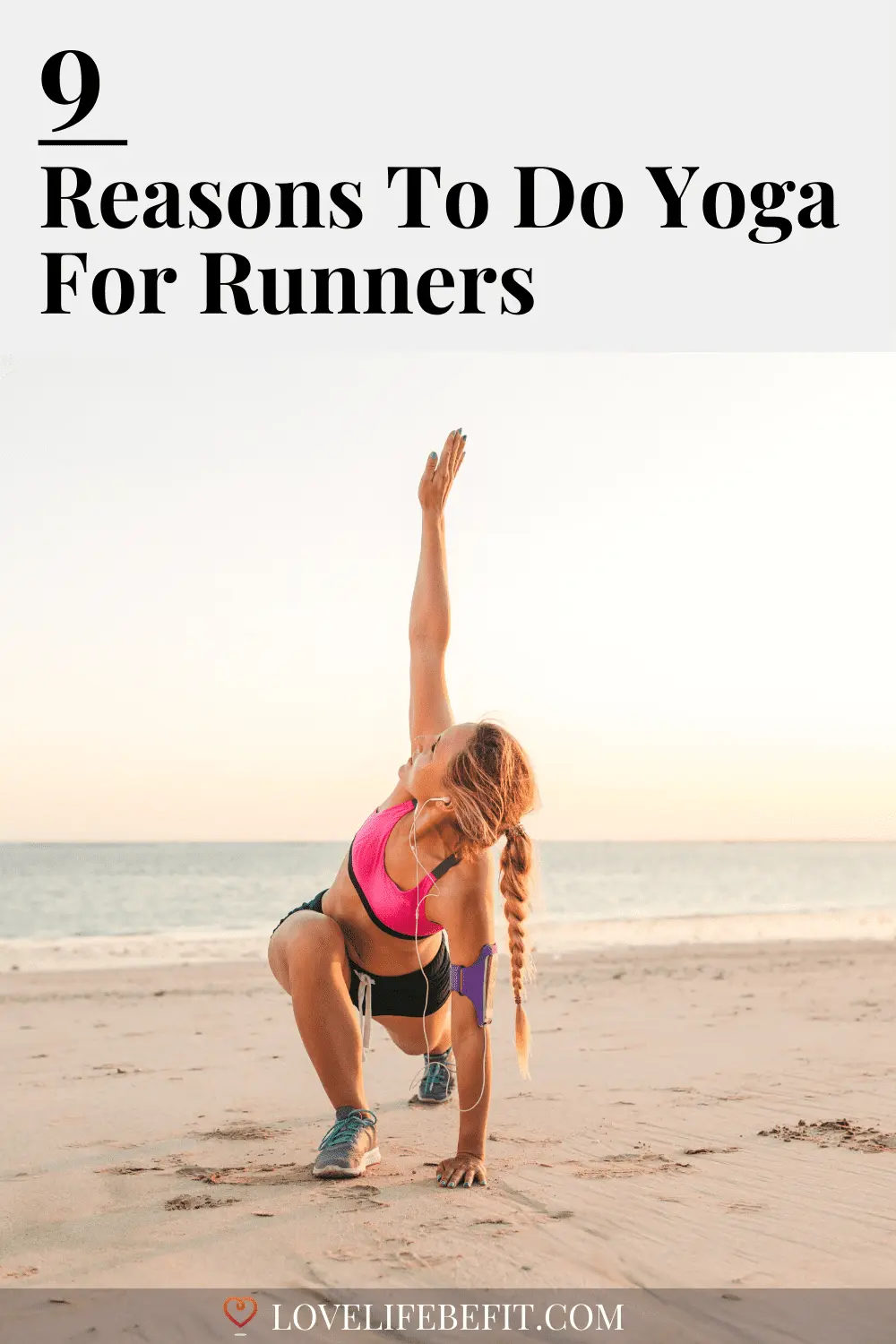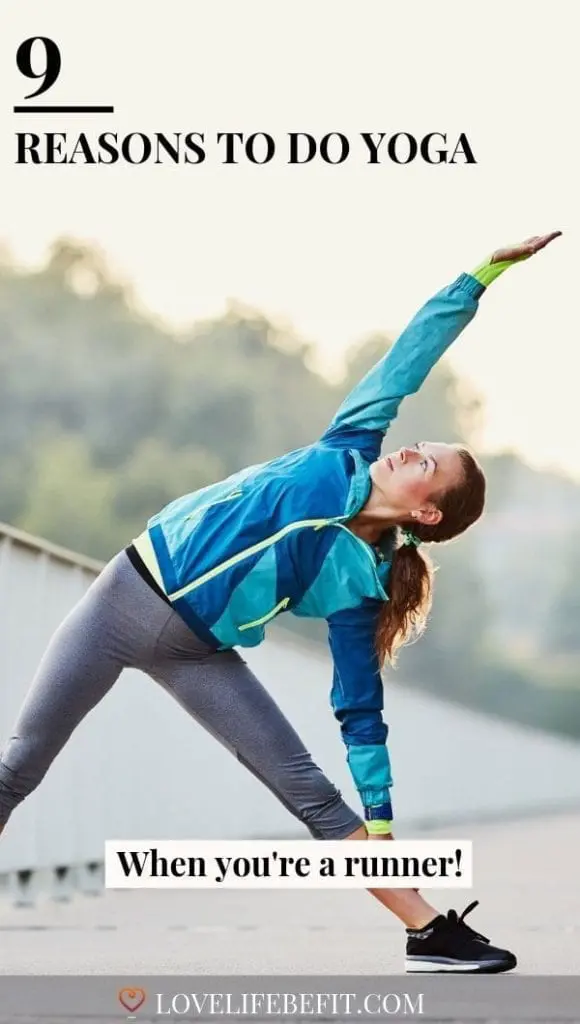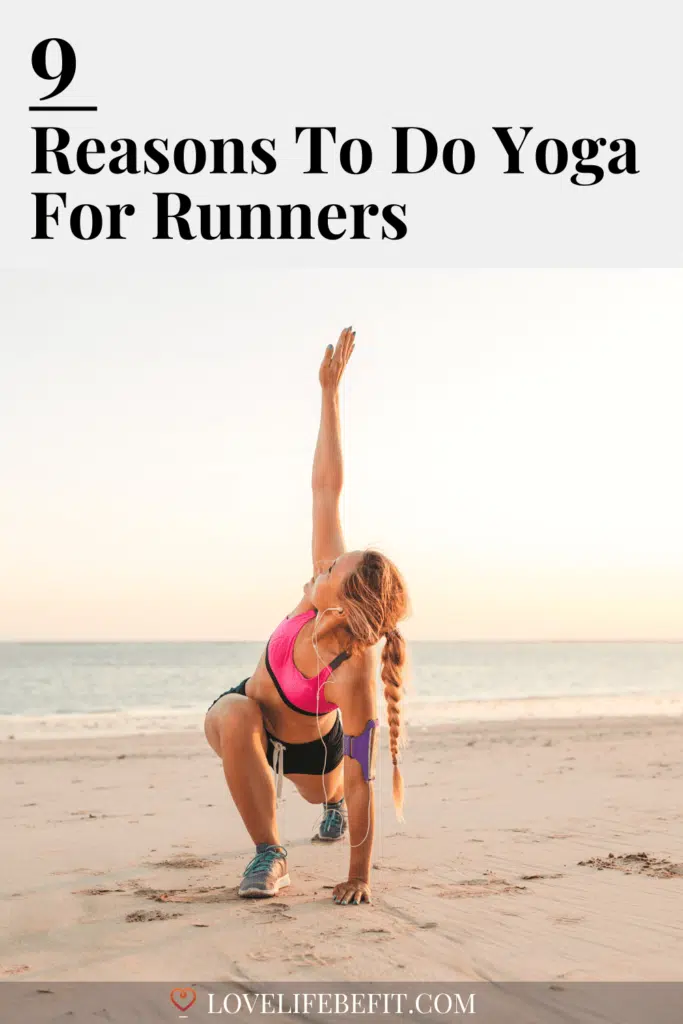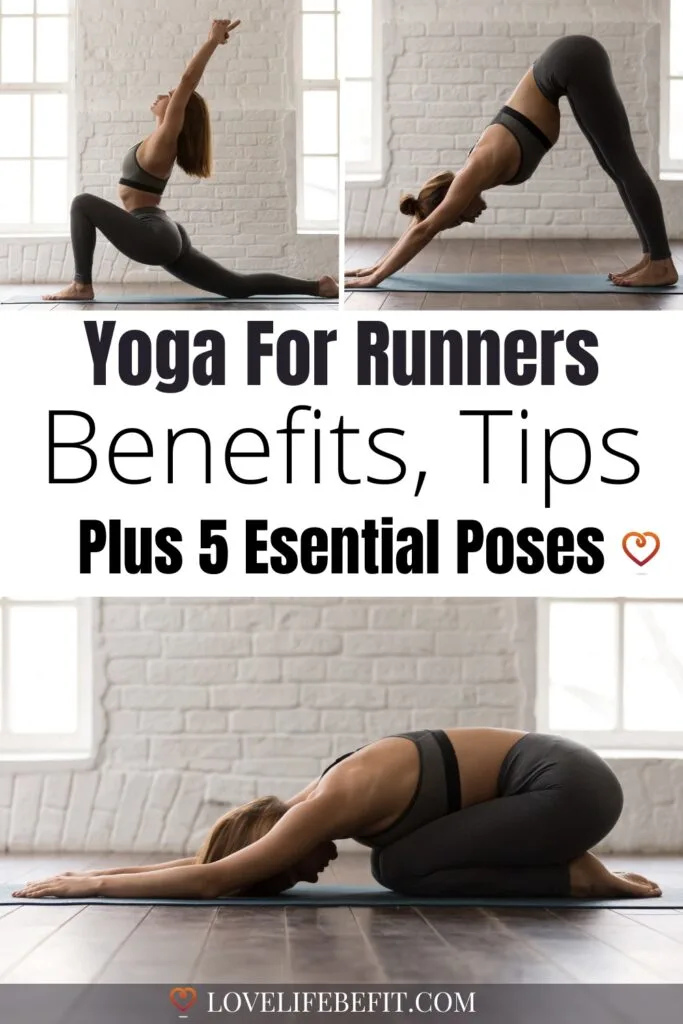Adopting a daily yoga habit is the best tip I can give you if you’re a keen runner. Even a 10-minute practice a day can make a huge difference and could be key to staying injury-free and becoming a better runner.
Toward the end of long runs, I get tight muscles everywhere. I’m sure I’m not the only one – getting over stiles becomes a major challenge at races for long-distance runners! Tight hips, tight hamstrings, and tight IT band are all part of running but a short sequence of poses on a rest day is a great way to recover.
Read on and discover the benefits of yoga for runners, with tips for building a regular yoga practice, and the best yoga poses…
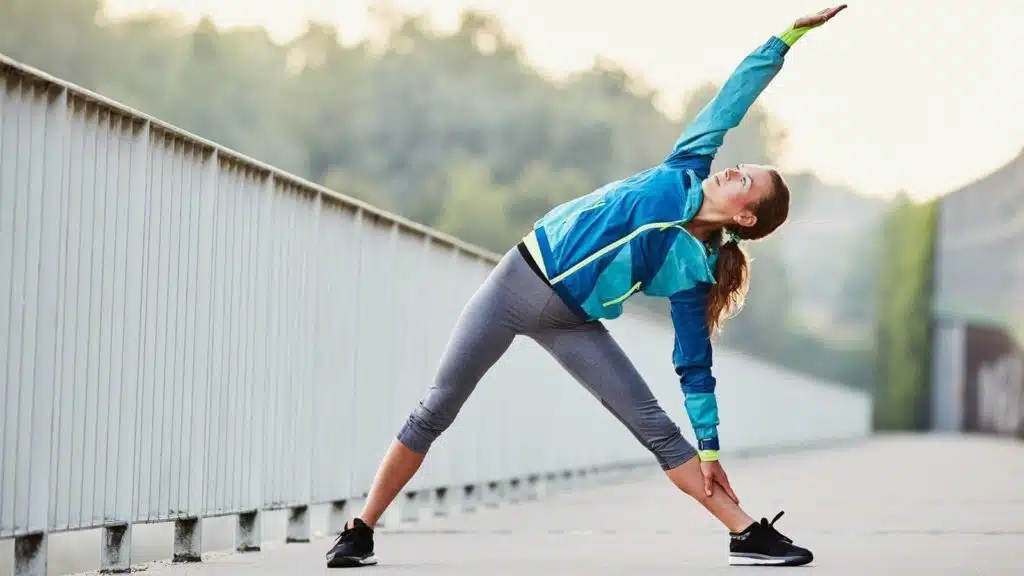
Yoga Benefits For Runners
The practice of yoga will make you a stronger runner with better posture, teach you controlled deep breathing, and helps with better balance. Here are some of the best reasons to combine yoga and running…
Flexibility
This is the most obvious reason for taking up yoga when you’re a runner. Runners tend to be the most inflexible people I know!
Yoga lengthens and loosens your muscles and will help to improve flexibility in the hip flexors and hamstrings. The result – moving more freely with a better range of motion and less risk of injury.
Muscle Imbalance
Running, like many sports, works some muscles far more than others. This over-stresses joints and can lead to injury. Typically, runners will have very strong quad muscles, but tight hip flexors and disproportionately weak hamstring muscles.
Yoga poses work the whole body. You will soon become aware of your weaknesses, but regular practice will correct the typical muscle imbalances caused by running.

Strength
The key issue for beginner runners? Lacking sufficient leg strength to complete training schedules and stay injury-free. Yoga is excellent for strength training in the upper and lower body.
You don’t need to go to a gym when you can strength train with your own bodyweight! Yoga poses will strengthen your core, quads, hamstrings, and hip flexors turning you into an efficient running machine!
Balance
Sometimes when you’re running you need to react quickly and avoid obstacles. Having a good balance reduces the risk of falls and is especially helpful if you run off-road. Yoga balance poses can really help.
Balance to a yogi is not just limited to the body. It covers all aspects of life and can help a runner be receptive to the needs of their body. A yogi runner is less likely to over-train and will take time to rest and recover.
Reduces Back Problems
The constant impact of running leads to a lot of lower back problems for runners. Gentle twisting and backstretch within a yoga practice can really help relieve low back problems and prevent injuries.
Strengthens Ankles
Ankles are often a weak point for runners, especially trail runners. Yoga standing poses are an excellent way to build ankle strength.
Breathing
Lung capacity is important for runners. However, running tends to induce quick, shallow breathing using only the top part of the lungs.
Yoga helps runners take deep, slow, inhalations using the upper, middle, and lower lung sections. The result can be increased lung capacity and running endurance.
Stress Release
Running can be a terrific help with stress release. Yet sometimes runners become overly competitive and anxious about races. Yoga can provide a sense of perspective and help relieve stress in the pre-race build-up.
Mindfulness
Yoga teaches mindfulness. Being fully aware of your body and your breathing can translate to getting the most out of your running. It can help you achieve your best running performance and, more importantly, find enjoyment.
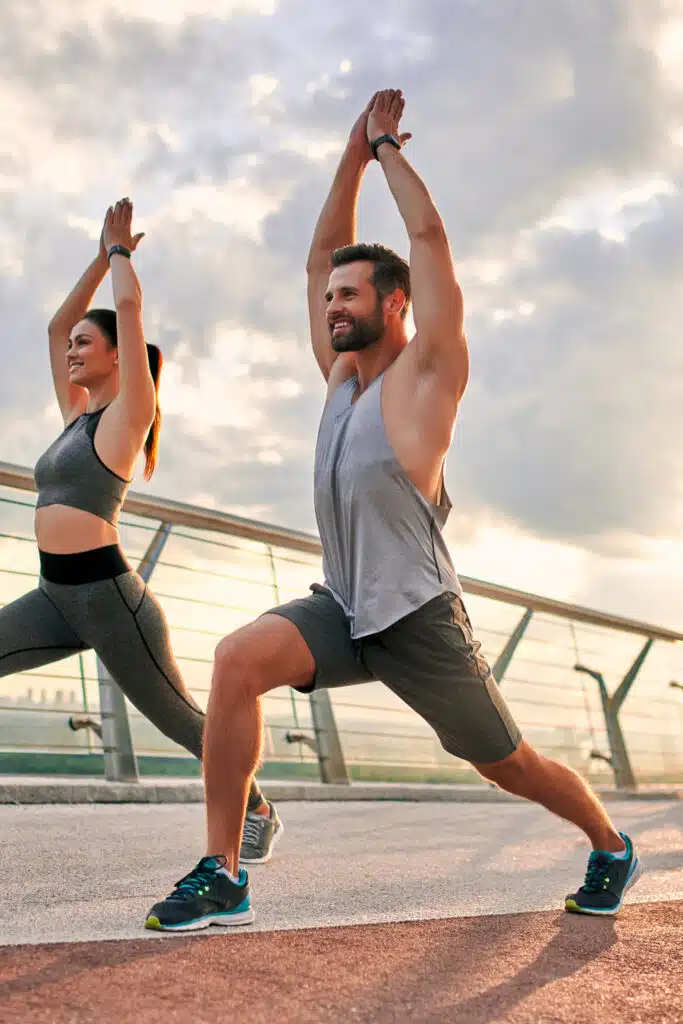
Combining Running And Yoga
Yoga and running are a perfect match! Running is one of the best ways to boost your overall fitness. Yoga is excellent for strength, balance, and flexibility.
If your main sport is yoga, adding a running routine will get your heart rate up and improve your cardiovascular fitness. Even an easy run once a week as part of your weekly routine will have its benefits – you’ll notice improved stamina in those challenging advanced yoga classes.
Running is good for weight loss and can burn almost three times as many calories as a session on the mat. It can make you hungry and a good run can leave you craving food. Fortunately, an added benefit of combining running and yoga is the way yoga can help control those cravings. You’re more aware of what you’re eating and better at picking up on signals that you’ve had enough to eat.
If you’re a serious runner, add a yoga session on rest days to improve your core strength and help with injury prevention. I find yoga is good for catching injuries at an early stage – you’re constantly comparing both sides of your body and can tell if something doesn’t feel quite right.
I find yoga helps with mental strength. Holding poses can hurt! It takes a great deal of physical effort and mental focus – just like the challenges faced by marathon runners!
Try adding yoga sessions to your training schedule and you could find you’re a stronger, faster runner benefiting from greater flexibility and less time out for injuries. The key is consistency – make sure you commit to those yoga sessions on a regular basis.
Yoga For Runners: How To Get Started
It can be difficult to know where to start when it comes to yoga. You’re a runner, right? We both know running takes up a LOT of time. Fitting in yoga classes on top of your running schedule is difficult.
Plus, particularly for runners, there are a lot of benefits from practicing a little yoga every day. If you’re like me, you stiffen up after a long run and spending just 10 minutes on the mat really helps.
So how often should you do yoga?
I like to access yoga in two ways:
- A class with a yoga teacher on a rest day. This will typically be a full-length 60 to 90-minute class of vinyasa yoga building strength as well as working on flexibility. The type of yoga is up to you. I suggest you try out a few different styles to find one that gives you the most benefits.
- Daily 10 to 20-minute yoga sessions at home. Usually post-run or first thing in the morning. I use restorative or gentle yin yoga to recover from runs and stretch out the entire body.
I’m terrible at remembering a yoga sequence, so for at-home sessions, I go online.
You can seek out free yoga classes on YouTube or try out an online subscription service.
Suggested Yoga For Runners Online Classes
I’ve selected a few online classes aimed specifically at runners.
Yoga With Adriene
This is a wonderful practice for stretching out the hips and building strong legs.
Ekhart Yoga
This is a soothing post-run session. Excellent for injury prevention.
Elena Cheung
Love the way this clip stretches out your feet – such an overlooked and essential body part!
What You Need To Get Started With Yoga
If you’re attending a class, your yoga teacher will provide all equipment. It’s best to check you don’t need your own yoga mat but I haven’t been to a class yet where they haven’t been provided. All you need to think about is what to wear.
Any stretchy, comfortable clothes will do but take a look at these articles – what to wear to yoga and what do guys wear to yoga.
This is what you need for a yoga session at home:
Yoga mat: Gaiam mats are my favorite but there’s no need to buy an expensive mat. A basic mat works just fine.
Yoga blocks: these will help you get the most out of yoga positions and they’re really helpful for inflexible runners!
Blanket: Good for sitting on folded over when you’re stretching and provides a warm cover for relaxing at the end of a class.
Yoga strap: It’s not essential but it really helps for holding certain positions.
5 Yoga Poses For Runners
These great yoga poses are specifically good for runners. Try and work them into your post-run recovery sessions.
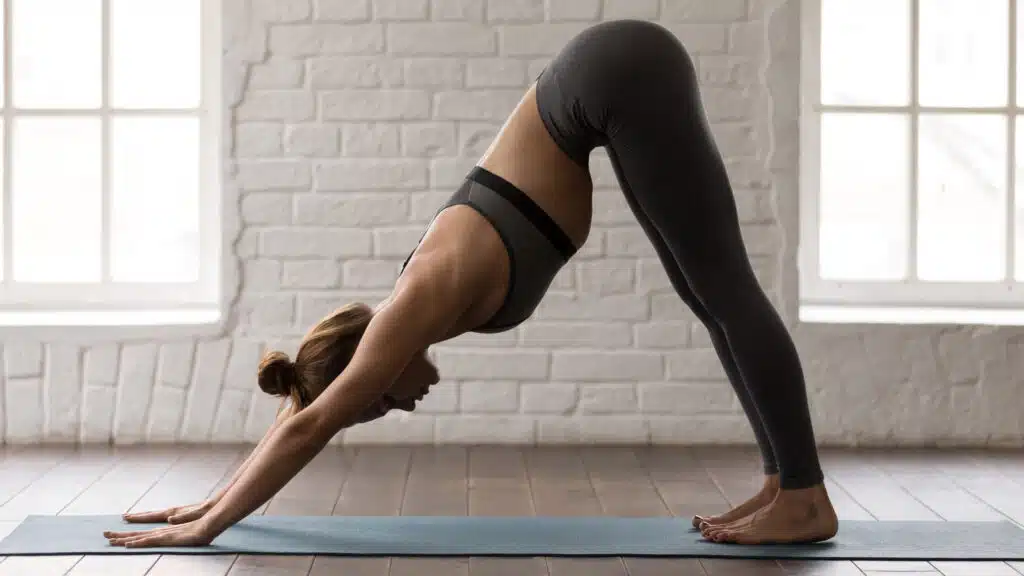
Downward Dog
Probably one of the best-known yoga poses, the downward-facing dog is excellent for stretching out your lower back, hamstrings, and calf muscles. It’s often used for resting and to transition into other yoga poses.
Start on your hands and knees with your weight spread evenly – wrists under shoulders, knees under hips – and push your knees up off the floor. Raise your hips, straighten your legs, and put your bum in the air! Take care not to lock your knees and don’t worry if your heels don’t touch the ground.
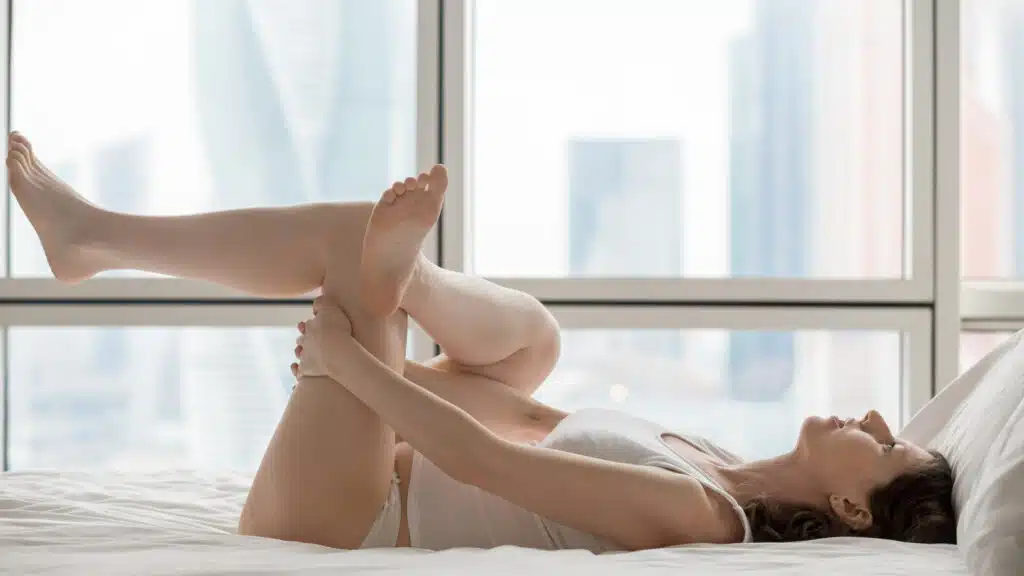
Reclining Pigeon Pose
This is a favorite position of mine. It helps to release my tight hips. It’s a position you can do anytime anywhere (you might get a few funny looks in the office). You can even try this one in bed!
With your knees bent, feet flat on the floor, knees hip-distance apart, cross your left ankle over your right thigh. Reach through and clasp your hands around your right knee and pull your right knee towards you. Flex your left foot. Alternatively, you can clasp your hands around your right thigh for a gentler stretch. Repeat on the other side.
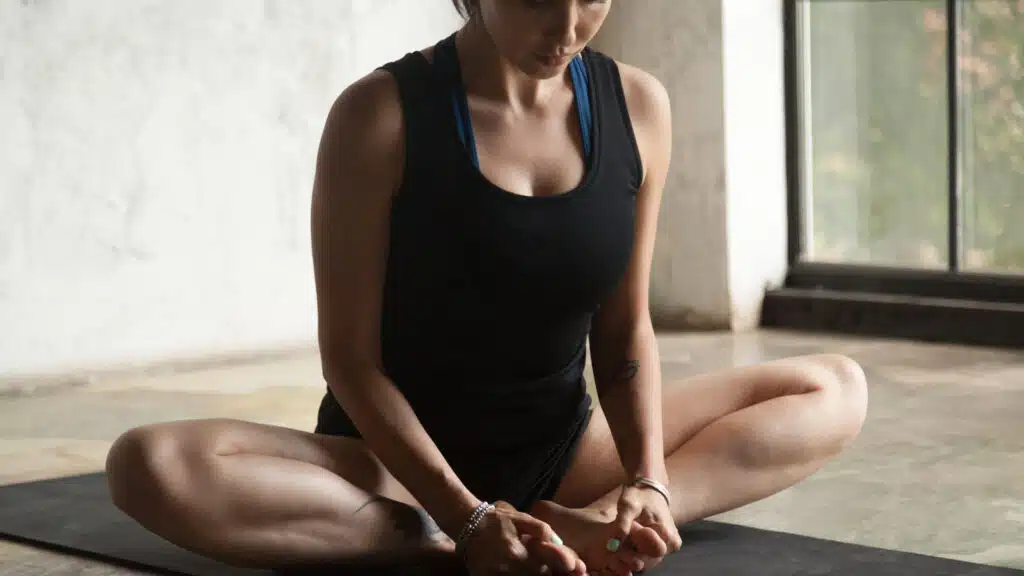
Butterfly
Another good pose for releasing your hips. It’s a good pose for stretching your inner thighs and lower back. From a seated position with legs outstretched bring the soles of your feet together. Your knees will fall open like a butterfly! Don’t force them. It can help to sit on a block or blanket.
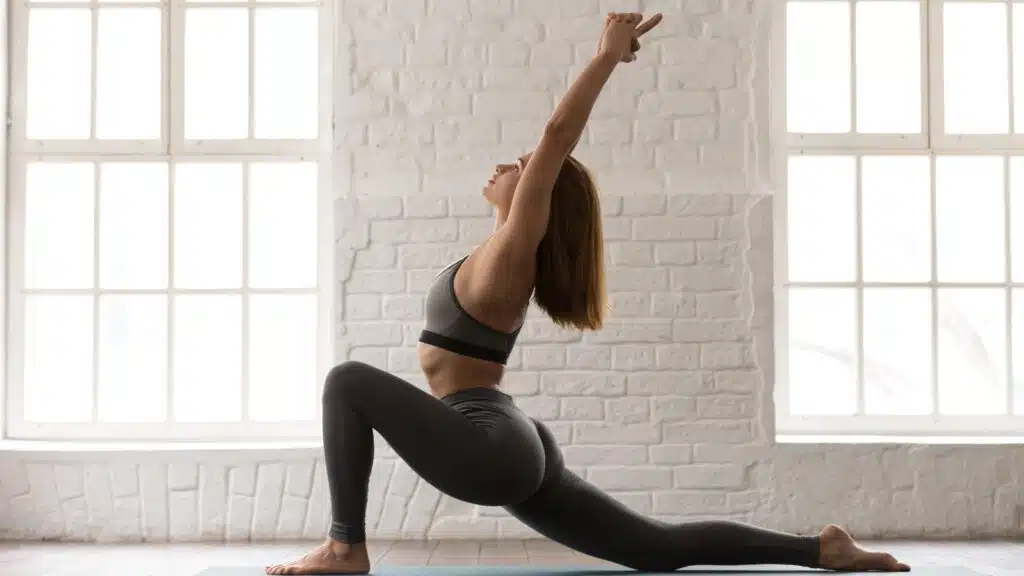
Low Lunge
I love the way this pose combines strength and flexibility in one pose. You stretch out your hip flexors and build strength in your legs working the hamstrings and quads.
From downward dog step your right foot forward between your hands. Lower your left knee to the ground and slide the left leg back keeping your right knee directly over your ankle. Lift up your upper body and sweep your hands up above your head. Stretch up up up… Repeat with the other side.
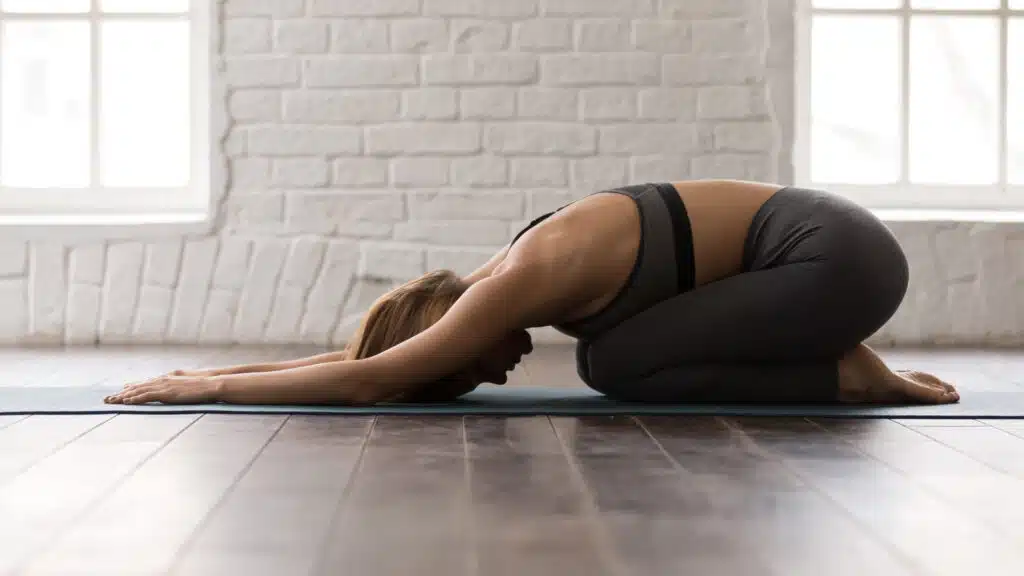
Child’s Pose
I find this is the best pose for relaxation. Use it at any time during a class when you need to take a pause. It’s never a good idea to over-do-it in a yoga class so take a rest whenever you need to.
With your knees apart, forward fold with arms in front of you for a great stretch. It should feel relaxing and comfortable. If not, find a different relaxation pose.
Thoughts From Love Life Be Fit
I’m convinced yoga helps me to stay injury-free as a runner. It’s made me discover muscles I didn’t even know I had! I’d love to hear if you’re a running yogi and how it helps you to keep on running!
